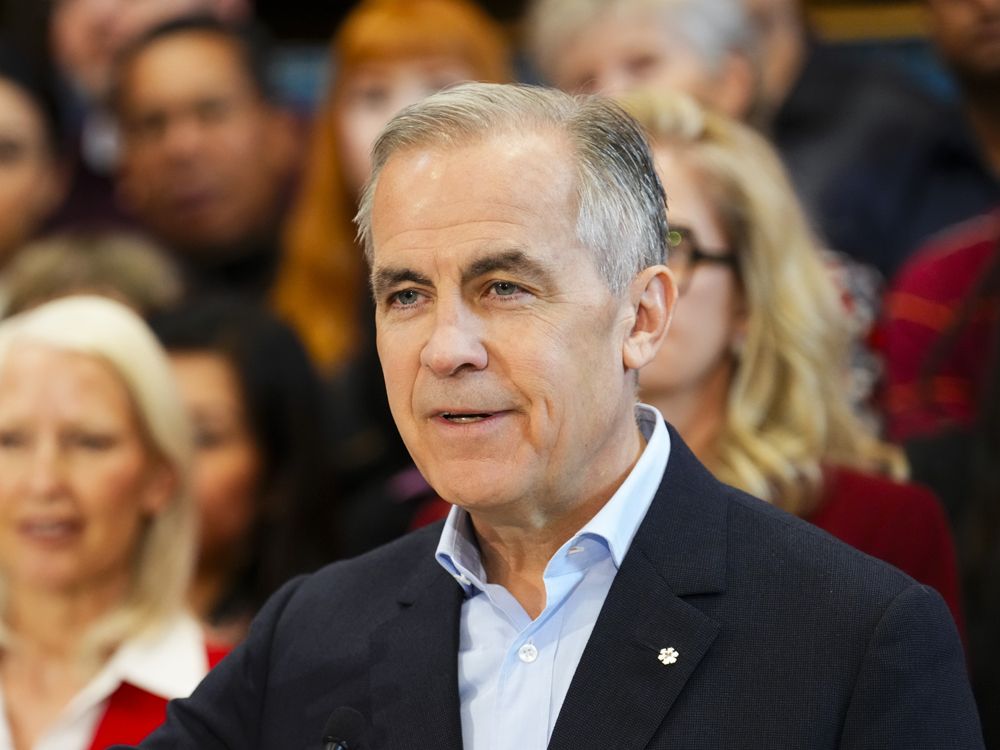Kevin Carmichael: The path the Liberals have chosen is littered with traps, but Chrystia Freeland’s pivot from the era of prudence should work, at least in theory
Article content
Chrystia Freeland, the primary guardian of Canada’s finances, is betting that the best defence against a post-pandemic debt spiral is a good offence.
For a generation, starting with Paul Martin in the mid-1990s, the federal finance minister has been mythologized as the one member of cabinet with the courage to say ‘no’ to spending sprees. Freeland’s first budget since her appointment as finance minister eight months ago will force a new narrative, one more relevant for the times in which we live.
The age of austerity is truly over. Confronted with an historic deficit, Freeland decided to spend more, not less, gambling that a series of multi-billion investments in childcare, green energy, and the knowledge economy will generate a return on investment that will allow Canada to grow out of its current problems. So instead of $105 billion, which would have been a narrower deficit than expected last autumn, the Finance Department now predicts a shortfall of about $155 billion in the fiscal year that began this month.
Advertisement
This advertisement has not loaded yet, but your article continues below.
Article content

But over time, the combination of stronger growth and relatively low interest rates will allow the federal government to get its finances under control, at least according to the budget, written with the help of Michael Sabia, the former head of pension fund Caisse de dépôt et placement du Québec, who ended his retirement in December to become deputy minister of finance.
The budget predicts that new short-term recovery measures, including a subsidy aimed at encouraging smaller companies to hire new workers, will help avoid the disappointing growth that followed the Great Recession. Freeland sees a deficit of about one per cent of GDP by 2026, and debt of about 50 per cent of the economy. Both figures are reasonable, especially under the circumstances. Significantly, the Trudeau government thinks it will get there without significant tax increases.

The path that the Liberals have chosen is littered with traps, but Freeland’s pivot from the era of prudence should work, at least in theory.
Former Bank of Canada Governor Stephen Poloz, who was appointed by Stephen Harper’s Conservative government in 2013 and resigned at the end of his tenure last year, is among the leading economists who say deficits can be managed as long as the rate of economic growth exceeds the interest rate governments pay to borrow.
Since leaving the central bank, Poloz has been urging politicians to instead worry about Canada’s ability to generate inflation-free growth, which dropped to an abysmal rate of about 1.2 per cent during the pandemic, according to the central bank’s most recent estimate. “All they have to do is target growth of two per cent,” Poloz told a conference hosted by the Ontario government last month.
Advertisement
This advertisement has not loaded yet, but your article continues below.
Article content
Poloz told the virtual conference that if it were up to him, he’d boost Canada’s economic potential by erasing all barriers to trade between the provinces; use the tax code to encourage companies to invest; and spend heavily on productivity-enhancing infrastructure, especially childcare.
Freeland’s budget checks those boxes, although the $21 million she set aside to support efforts to boost inter-provincial trade looks perfunctory. The government’s commitments to the other items on Poloz’s list are more noteworthy and could be significant, depending on execution.
The most important measure in the budget is a promise to use the federal spending power to bring about $10-a-day childcare across the country, a potential game-changer that — based on Quebec’s experience over the past couple of decades — will significantly boost the participation of women in the economy. The Trudeau government is prepared to commit more than $8 billion per year, an investment that it estimates would more than pay for itself by adding 240,000 workers to the labour force and raising GDP by as much as 1.2 per cent. It would be a positive shock to growth on par with the original North American Free Trade Agreement.

At the same time, the budget would commit tens of billions of dollars to infrastructure such as public transit and ports, tax measures aimed at encouraging companies to invest in technology and research, and funds that would be used to back companies with high-growth potential. Together they could jolt Canada’s woeful productivity rate, which would in turn increase the county’s potential to generate more growth stoking inflation.
Advertisement
This advertisement has not loaded yet, but your article continues below.
Article content
To be sure, there is nothing new about shovelling cash at businesses, whether it be directly through grants and/or cheap loans or tax breaks. But Freeland’s budget suggests that Ottawa is getting over its fear of picking winners. The Trudeau government proposes setting aside hundreds of millions of dollars for four specific fields where it thinks Canada has a chance to excel: artificial intelligence, quantum computing, photonics and genomics. It would seed a “net-zero accelerator” with $8 billion to back clean-energy companies, and it would boost the Strategic Innovation Fund, which allows the industry minister to function as something akin to a venture capitalist.
Some will dislike the sight of politicians and technocrats becoming active players in the economy, a valid concern, but one that probably should be set aside for now.
Our blind faith in laissez-faire economics and smaller government, beginning in the 1990s, resulted in a depleted manufacturing base that had no ability to produce vaccines. Our assumption that lower corporate taxes would lead to investment in cutting-edge research technology was misguided, as Canada’s companies spend the least on research and development in the Group of Seven nations, according to Statistics Canada.
That’s impeding our ability to keep up as the world shifts to a knowledge-based economy. Canada’s spending on research and development as a percentage of gross domestic product peaked in 2001 at two per cent, and had drifted down to 1.7 per cent in 2018, the most recent year for which data are available.
Canada’s economy was overdue for a positive shock. An historic budget might do the trick.
Financial Post
• Email: kcarmichael@postmedia.com | Twitter: carmichaelkevin
Advertisement
This advertisement has not loaded yet, but your article continues below.
Canada’s economy was overdue for a positive shock — an historic budget might do the trick
2021-04-19 22:05:18





